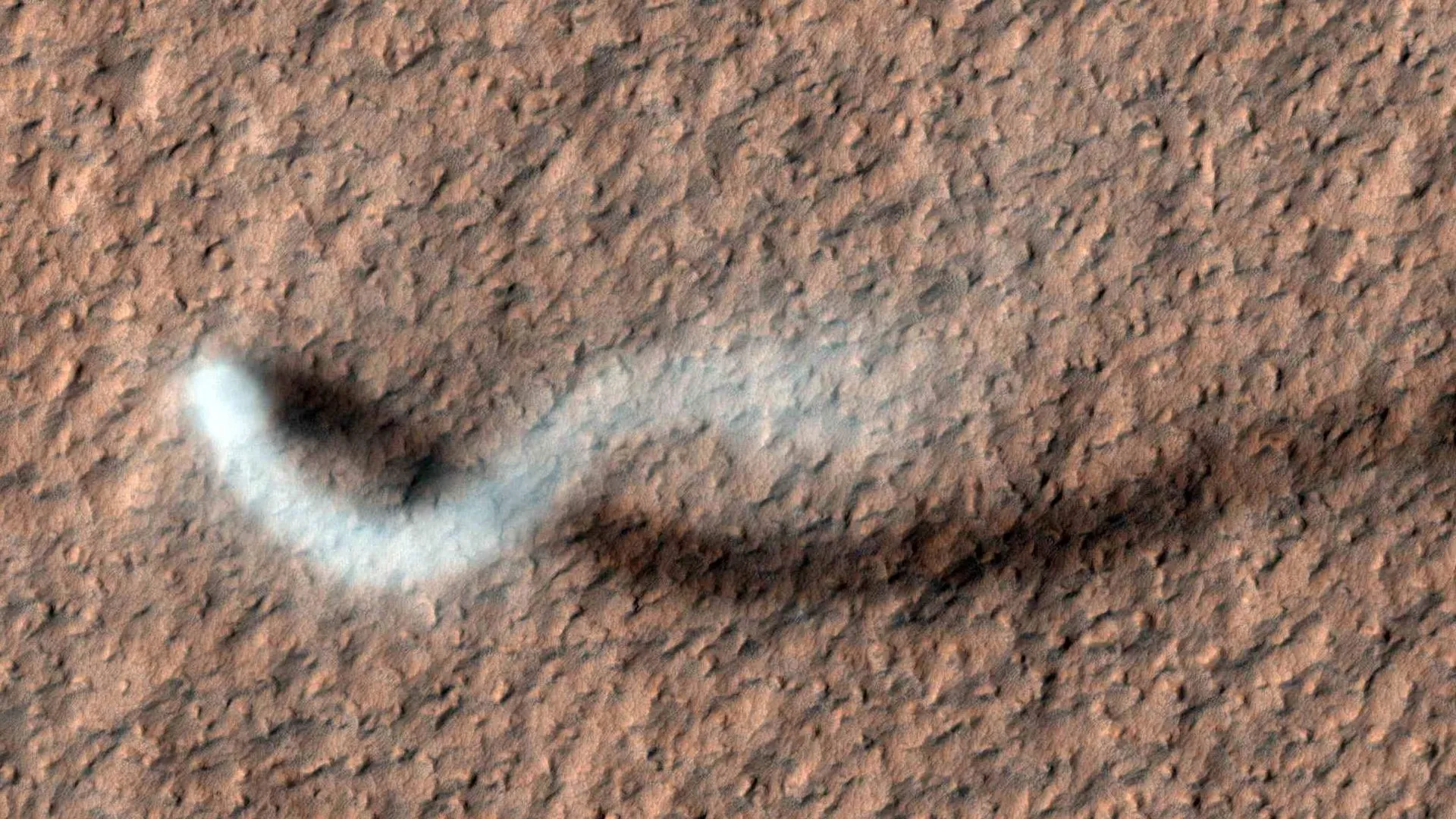
Dust devils on Mars serve as a valuable indicator of wind conditions on the red planet for scientists back on Earth.
These spinning air and dust columns present a visual indicator for otherwise invisible wind movements.
A new study led by Dr. Valentin Bickel from the Center for Space and Habitability at the University of Bern shows that wind speeds on Mars are significantly higher than previously thought. These raging Martian winds shed light on weather conditions on the red planet – crucial data for future crewed Mars missions.
Identifying dust devils on Mars
The new paper, published in Science Advances, details how Bickel’s team leveraged deep learning to analyze Mars’ wind conditions. They used images from the Bern-based Mars camera CaSSIS (Color and Stereo Surface Imaging System) and the stereo camera HRSC (High Resolution Stereo Camera).
CaSSIS is on board the European Space Agency’s (ESA) ExoMars Trace Gas Orbiter, while the HRSC camera is on board the ESA orbiter Mars Express.
“Using a state-of-the-art deep learning approach, we were able to identify dust devils in over 50,000 satellite images,” Bickel said in a press statement.
According to the researchers, the faster-than-expected winds could be responsible for a large part of the dust uplift on the red planet. This has a major impact on Mars’ weather and climate.
With NASA and other global space powers looking to send humans to Mars eventually, scientists need to understand variable conditions like weather better as much as possible.
100 mph Martian winds
The team then examined stereo images of roughly 300 dust devils to measure their directions of movement and their velocities. Stereo images are essentially made up of two separate images, taken a few seconds apart. This means they clearly indicate the direction of travel of dust devils.
“If you put the stereo images together in a sequence, you can observe how dynamically the dust devils move across the surface,” Bickel added.
The results showed that the dust devils and their surrounding winds can reach up to 44 m/s, or 160 km/h (100 mph). This is much faster than the previously assumed average of 50 km/h or under.
“These strong, straight-line winds are likely to bring a considerable amount of dust into the Martian atmosphere – much more than previously assumed,” Bickel continued. “Our data show where and when the winds on Mars seem strong enough to lift dust from the surface. This is the first time such findings have been available globally for around two decades.”
The new research could guide the weather and climate models of Mars, which will be crucial for future crewed missions to the red planet. Next, the team behind the study aims to perform targeted and coordinated observations of dust devils to provide even more insight into our neighboring planet.
“A better understanding of the wind conditions on Mars is crucial for the planning and execution of future landed missions,” co-author Daniela Tirsch, from the Institute of Space Research at the German Aerospace Center (DLR), explained. “With the help of the new findings on wind dynamics, we can model the Martian atmosphere and the associated surface processes more precisely.”